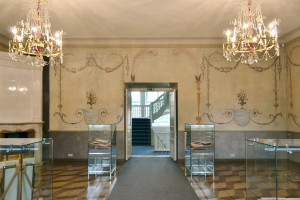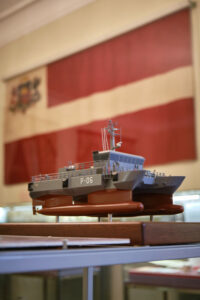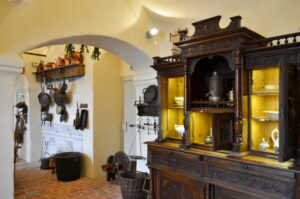
Home > The castle complex > Cēsis castle manor house > Historical exhibition
 Cēsis – administrative, political and economic centre during 16th – 19th century. View of History exhibition, located in one of the castle`s presentation halls – Great salon. After the restoration of Cēsis castle manor house within its historic interiors, a permanent exhibition, “Cēsis – a symbol of Latvian history” is located, which tells the story of Cēsis special role in Latvian history. Cēsis almost always has been at the heart of spiritual, social and political events for more than 800 years of the city`s history, where, for power and influence, fought the Teutonic Order of Knights and Polish, Swedish and Russian imperial rulers. Events which took place in Cēsis during the 19th and 20th centuries have had a significant impact on the Latvian state and the establishment of the independence processes. In Cēsis castle manor house the first Latvian national army unit – Cēsis company was founded and Cēsis is the birthplace of the Latvian flag!
Cēsis – administrative, political and economic centre during 16th – 19th century. View of History exhibition, located in one of the castle`s presentation halls – Great salon. After the restoration of Cēsis castle manor house within its historic interiors, a permanent exhibition, “Cēsis – a symbol of Latvian history” is located, which tells the story of Cēsis special role in Latvian history. Cēsis almost always has been at the heart of spiritual, social and political events for more than 800 years of the city`s history, where, for power and influence, fought the Teutonic Order of Knights and Polish, Swedish and Russian imperial rulers. Events which took place in Cēsis during the 19th and 20th centuries have had a significant impact on the Latvian state and the establishment of the independence processes. In Cēsis castle manor house the first Latvian national army unit – Cēsis company was founded and Cēsis is the birthplace of the Latvian flag!
 Red-White-Red flag in the history of Cēsis and Latvia. In the exposition visitors can see museum’s biggest treasure – the first known national flag.
Red-White-Red flag in the history of Cēsis and Latvia. In the exposition visitors can see museum’s biggest treasure – the first known national flag.
The exposition consists of red-white-red themed stories of Cēsis and the people who have influenced Vidzeme region, Latvian and European history in different eras. It also includes almost 500 year long history of Cesis castle manor house and its last owner`s Count Sievers legacy to Cēsis town.
 Cēsis New castle and manor house. On the first floor medieval building’s structures are exposed.
Cēsis New castle and manor house. On the first floor medieval building’s structures are exposed.
The Historical exhibition is located on the first floor of the castle where during the manor-time the utility room and servant rooms were situated. On the second floor, besides the historical exhibitions, interior of restored and renovated manor-time representation halls and living rooms are exposed.
 On the first floor of the New Castle, in the historical location of the kitchen and the bakery, visitors can see an exhibition dedicated to castle’s kitchen. It offers to get acquainted with the everyday life and the culture in the kitchen of the manor in the 19th century. It also serves as a place to relax, to read a cook book from the relevant period or just to have a good time.
On the first floor of the New Castle, in the historical location of the kitchen and the bakery, visitors can see an exhibition dedicated to castle’s kitchen. It offers to get acquainted with the everyday life and the culture in the kitchen of the manor in the 19th century. It also serves as a place to relax, to read a cook book from the relevant period or just to have a good time.